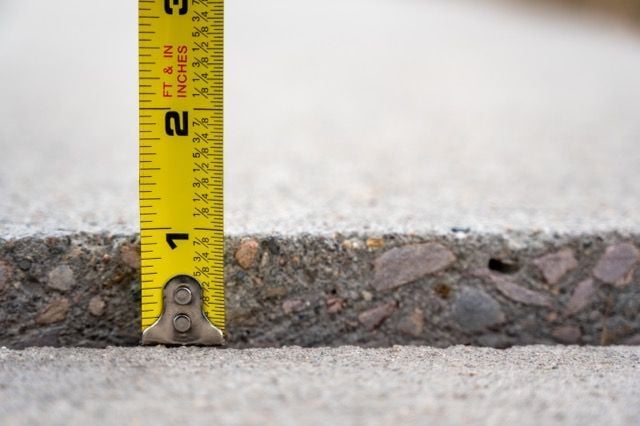
Is mudjacking worth the hype? Weigh the pros and cons of this concrete leveling method to find out if it's right for you.
Mudjacking, also written as “mud jacking”, is a convenient and affordable way to lift settled concrete slabs. But how do you know if this concrete repair method is worth it for you?
With over 30 years of experience perfecting the art of lifting settled concrete, A-1 Concrete Leveling has seen how each concrete leveling method (mudjacking, stone slurry grout leveling, and foam) stacks up against one another.
Each method has its own advantages and disadvantages, and in order to help you decide which one is best for you, we’ve created guides on the pros and cons of each. First stop: mudjacking!
What Is Mudjacking?
Before jumping in and learning about the pros and cons of mudjacking, it's important to learn what it really is.
Mudjacking is a method of leveling settled concrete that uses a sand, soil, and water leveling mixture. To lift the sunken concrete with mudjacking, holes around 2 inches in diameter are drilled in the slab, and this leveling mixture is pumped through the holes in order to lift it.
"Mudjacking" as an Umbrella Term
“Mudjacking” is often mistakenly used as a generic over-arching term to mean “concrete leveling”, but the reality is that it is actually a very specific type of concrete leveling.
Although mudjacking follows a similar set of steps as both the foam leveling and stone slurry grout processes, it is a different method of concrete leveling, set with its own individual pros and cons.
Mudjacking is different than what we use here at A-1 Concrete Leveling. Instead, we use stone slurry grout leveling for most repairs, and we also use polyurethane foam for some repairs.
Mudjacking Pros & Cons Overview
| Pros | Cons |
|---|---|
|
|
|
|
|
Pros of Mudjacking
-
Can be durable when done correctly
Mudjacking has the potential to fill the voids underneath a slab of concrete entirely, creating a strong, long-lasting lift.
However, spreading the material evenly is hard to achieve with mudjacking, as it is highly pressurized and hard to control.
-
Can lift heavier slabs
Mudjacking can lift heavier objects when compared to foam leveling. Because there is no chemical reaction taking place in order to lift the slab, the lifting compound can, in theory, spread and put constant pressure across the base and level the heavy concrete.
Cons of Mudjacking
-
Highly pressurized
Traditional mudjacking pumps the concrete leveling compound at a much higher pressure and speed, which can prevent the material from flowing evenly throughout the void under a concrete slab.
This can create piles of material and produce weak spots prone to cracking in the slab where there is no material supporting underneath, which can cause a weaker overall repair.
-
Hard to control
Because traditional mudjacking is highly pressurized, it’s harder to tackle complex jobs.
As the flow of material is faster and stronger, the crewmembers can overdo the concrete lift with the lack of control, causing more time and repair needed to complete the job right.
-
Larger drill holes
When compared to limestone slurry and foam leveling, the holes needed to perform a traditional mudjacking job are far bigger and hard to conceal.
To account for the high speed and pressure of mudjacking, the holes have to be drilled around 2 inches, rather than around ⅝ inches for foam or 1 inch for stone slurry.
Is Mudjacking Worth It?
Now that you know a little more about the advantages and disadvantages of mudjacking, you’re ready to decide if it’s a method worth using to repair the sunken concrete on your property.
Whatever the repair method you choose, the goal of concrete leveling is to return your settled concrete back to a safe and level position, and mudjacking is just one way to do that.
Stone slurry grout leveling and foam leveling are also options to consider, and we have plenty of resources that talk about both of these in our library of content, called Concrete Academy. Below are some related topics:
- Pros & Cons of Concrete Leveling in General
- Pros & Cons of Foam Leveling
- Pros & Cons of Stone Slurry Concrete Leveling
- How Long Does Concrete Leveling Last?
If you’re interested in concrete leveling for your property, click the link below to request a free onsite estimate with a member of the A-1 team!
Click Here to Find Your Nearest Location and Receive a FREE Estimate
Sarah Etler joined A-1 Concrete Leveling after receiving her Bachelor of Arts degree in English from Northern Kentucky University. As A-1's Content Marketing Manager, she works closely with industry experts to produce content that will best answer questions related to concrete repair and maintenance practices. Sarah loves living a life full of discovery and is excited every day to see what new things she can learn and share with those around her.
Topics: